I am still catching up on the trip to Scotland that Nick and I took last year. In my last post, I talked about our discovery of the Brow Well and it’s association with Robert Burns, so I thought a good follow-up would be the homes of Robert Burns that we were able to visit.
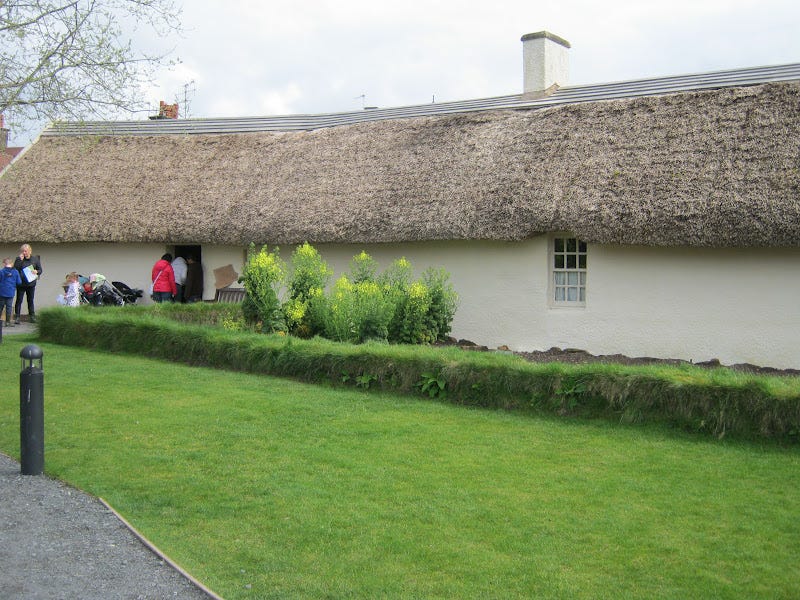
On our way to Dumfries, we traveled west over to Alloway first, to find the Robert Burns Cottage — the place where he was born, and where he lived the first seven years of his life.
As an old cottage, it is interesting, but Nick and I didn’t really feel much at the cottage. Not a sense of Burns, which perhaps isn’t surprising, as he was only a child here. But this place has been a tourist destination since it was restored and opened as a museum in 1881. And, a place where thousands of tourists pass through can often lose itself.
We went on to the nearby museum, which ended up being a lot of fun — and seeing all the Burns artefacts was really exciting. And we highly recommend the cafe. The food was delicious. We both ordered something that included haggis and we still talk about how good it was!
They had a lot of wonderful quotes of the poet, as well as interesting objects belonging to him and to his wife Jean Armour. And the information signs were in Scots and English, which I think is wonderful.
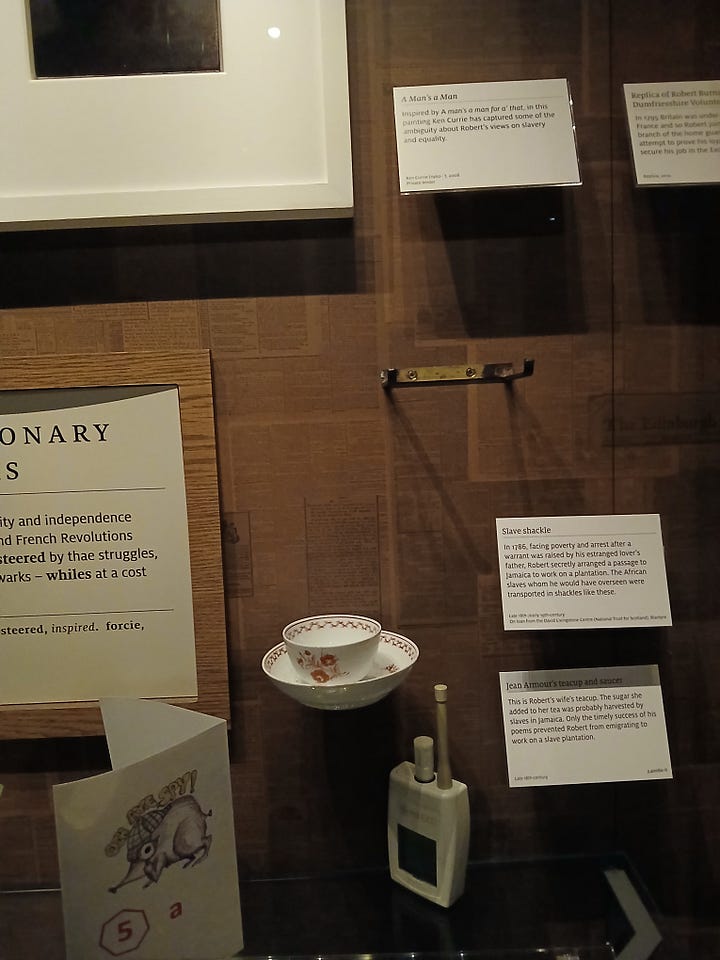
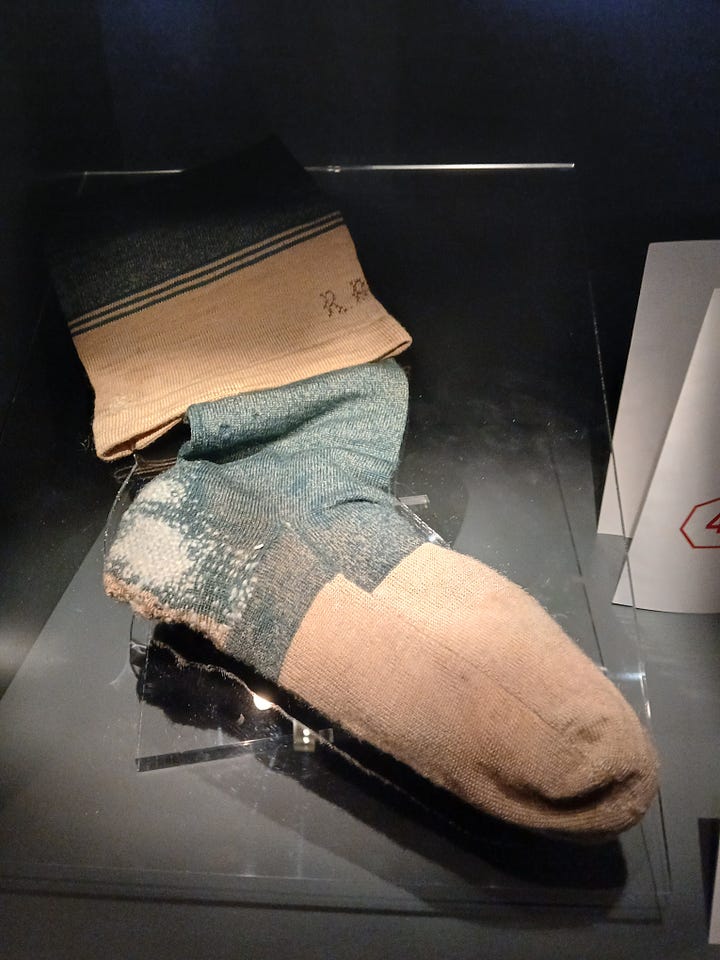
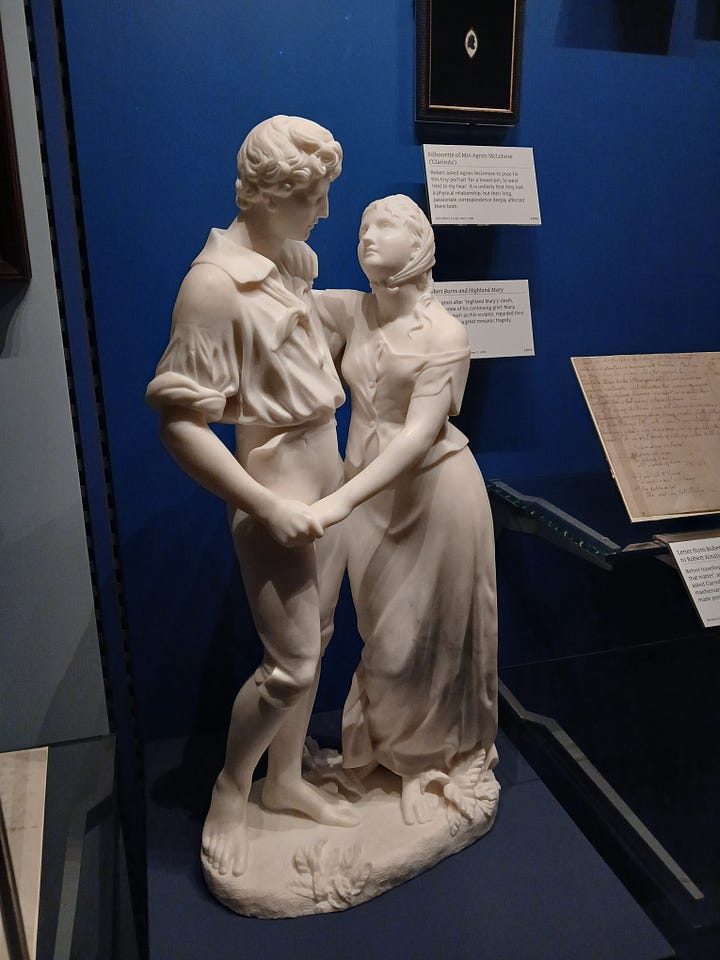
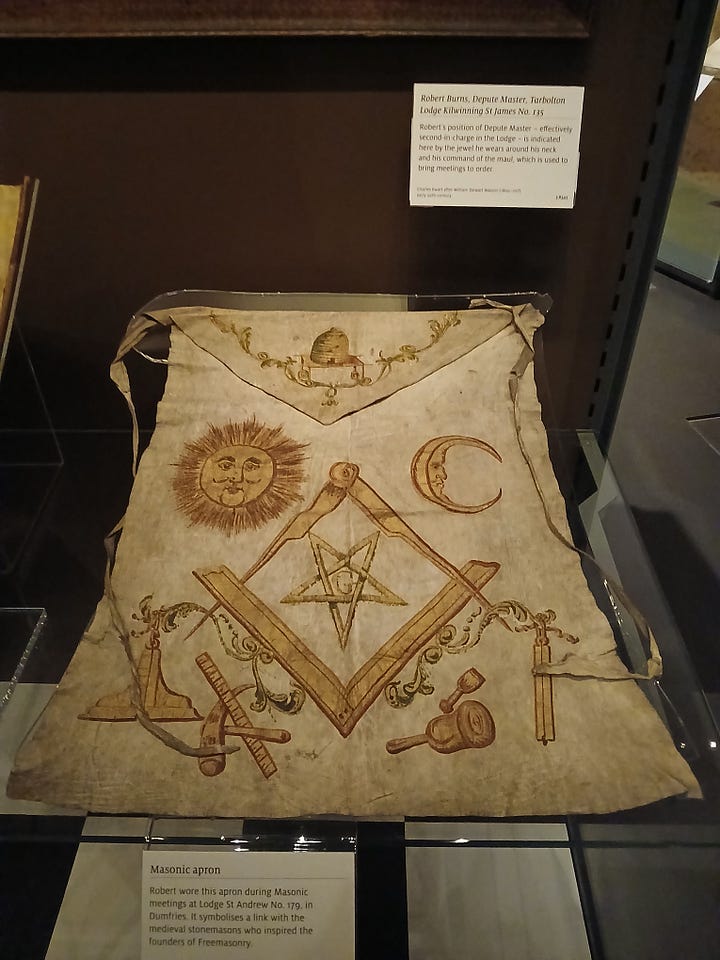
After wandering around the museum and gift shop, we also wandered around Alloway Auld Kirk, which is the setting of Burns’ poem, “Tam O’ Shanter”, but I will save that for another post.
We continued on our way south, to Dumfries and Galloway, and made it in time to see the house Burns lived in the last few years of his life, and where he died. We were able to tour the house on our own, and at the end talked to a very friendly and energetic man who told us some wonderful stories about Burns, including one about a teenage girl who was employed to nurse Burns as he was ailing, and how a deep fondness grew between them, and when the girl (who went on to grow up, marry and have children) grew old, she requested to be buried near Burns, and so she was.
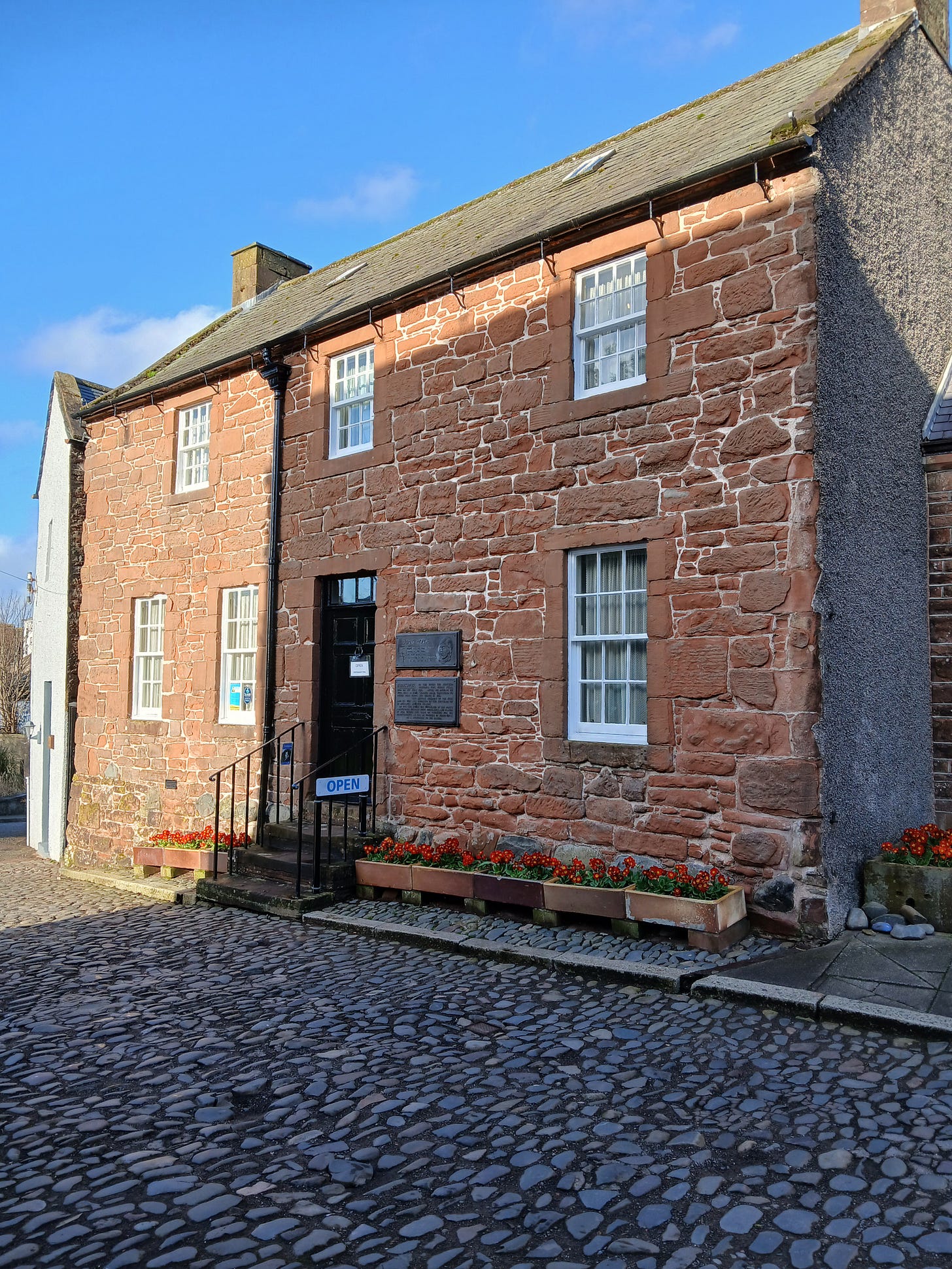
Again, Nick and I had a similar sense to the Burns Cottage — that the spirit of the place was gone, on account of all the people that have made pilgrimage here. In fact, just seven years after his death, William Wordsworth, his sister Dorothy and their friend Samuel Taylor Coleridge, visited this house. Dorothy wrote an account of their trip to Scotland:
18 August 1803: A bookseller accompanied us. He showed us the outside of Burns’s house, where he had lived the last three years of his life, and where he died. It has a mean appearance, and is in a bye situation, whitewashed; dirty about the doors, as almost all Scotch houses are, flowering plants in the windows…when our guide left us, we turned again to Burns’s house. Mrs. Burns was gone to spend some time by the sea-shore with her children. We spoke to the servant-maid at the door, who invited us forward, and we sate down in the parlor. The walls were coloured with a blue wash; on one side of the fire was a mahogany, opposite to the window a clock, and over the desk a print from the ‘Cottar’s Saturday Night’ which Burns mentions in one of his letters having received as a present…
The account goes on, but it’s fascinating to me that already people were wanting to visit the place where he lived, and I wonder too, how soon after his death that his letters (which Dorothy mentions) were published. It shows how greatly he was loved.
And he is loved still. Many sing his song “Auld Lang Syne” to welcome in the New Year. All over the world, on January 25th, the day of his birth, he is celebrated by a feast which includes poetry, haggis and other things honoring the Bard. There are statues of him all over the world, and places named after him. Just over fifty miles west of where we live is a small town called Burns, named after the poet. Nick and I often sing his songs, and are always struck by the beauty and power of them.
I wrote more of his life and quote one of our favorite songs in this post:
Bughtin Time
“Those who think that composing a Scottish song is a trifling business, let them try.” — Robert Burns
I will close with some of his own words:
The sun was sinking in the west,
The birds sang sweet in ilka grove;
His cheek to hers he fondly laid,
And whisper’d thus his tale o’ love:
“O Jeanie fair, I loe thee dear;
O canst thou think to fancy me!
Or wilt thou leave thy Mammie’s cot,
And learn to tent the farms wi’ me?
~ from Bonie Jean




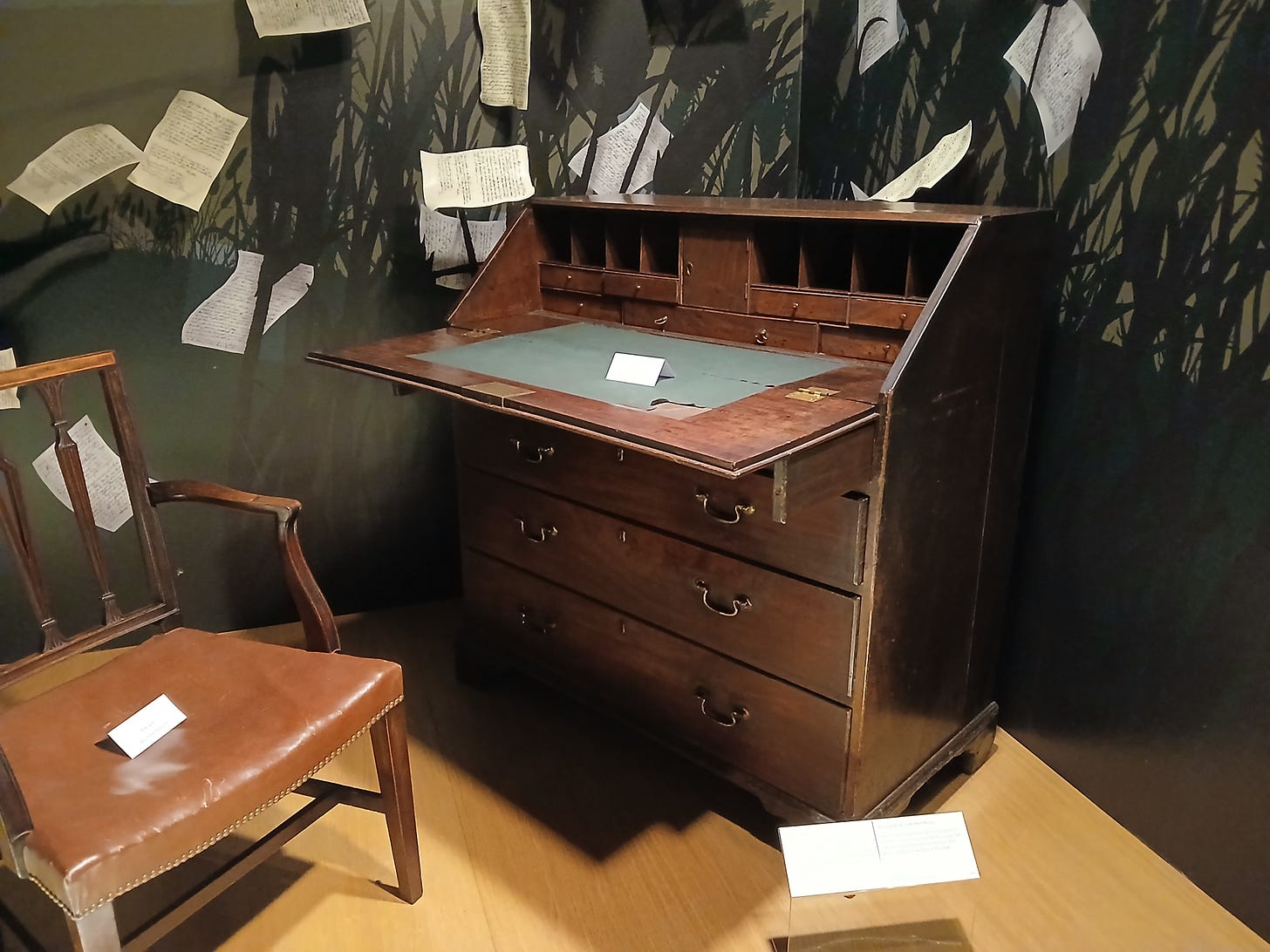
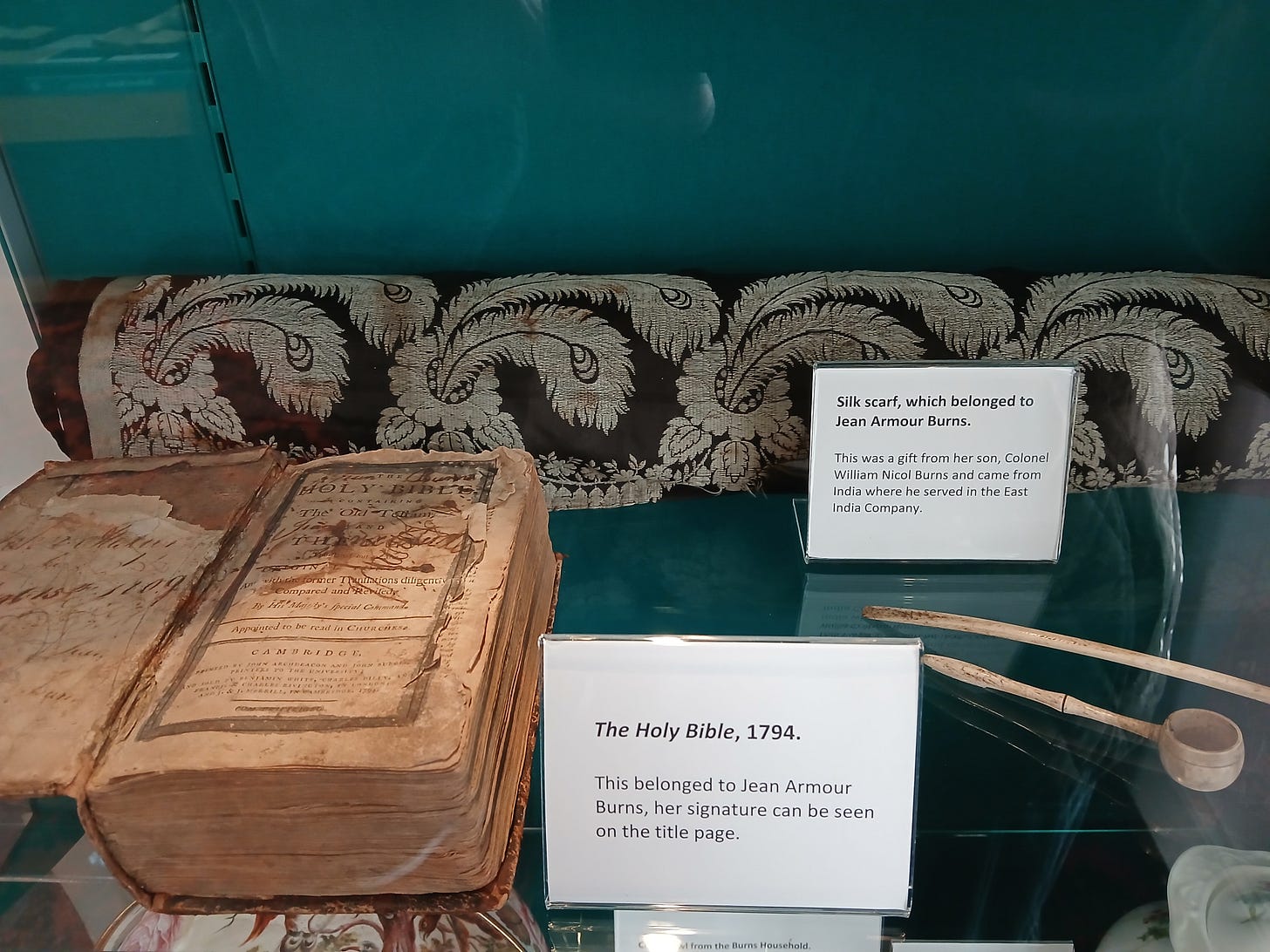
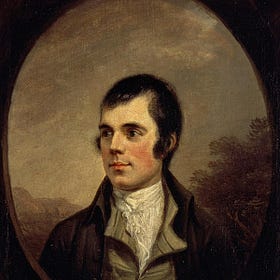
I went to the Burns house and museum when I was in Scotland last September. I found the museum very informative and I loved the church where his mom I believe is buried.
How long has the museum been there? I don’t remember it from my visit. That darned stocking!! And his Masonic apron!! And I love that the signs were also in Scots! Fascinating that the Wordsworths visited there, and actually went inside!